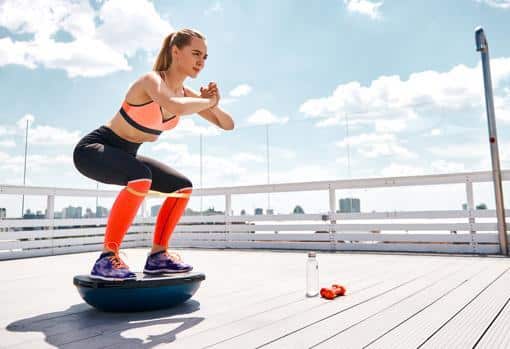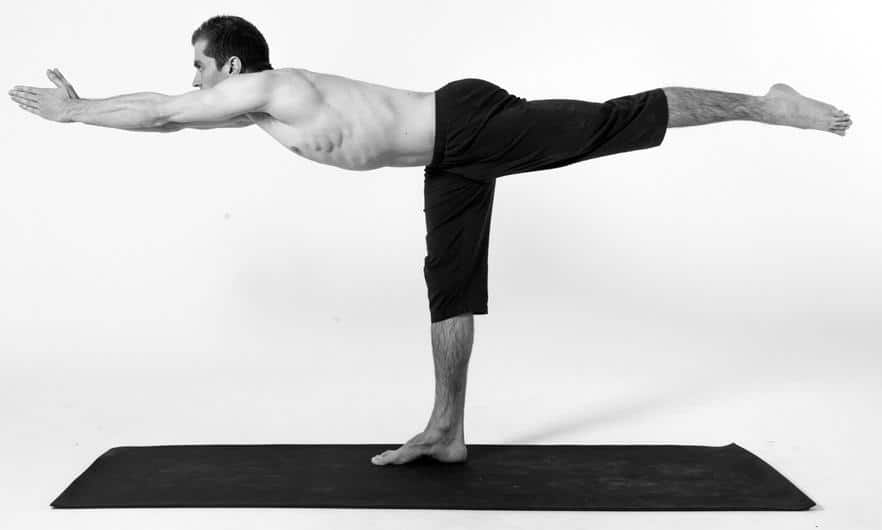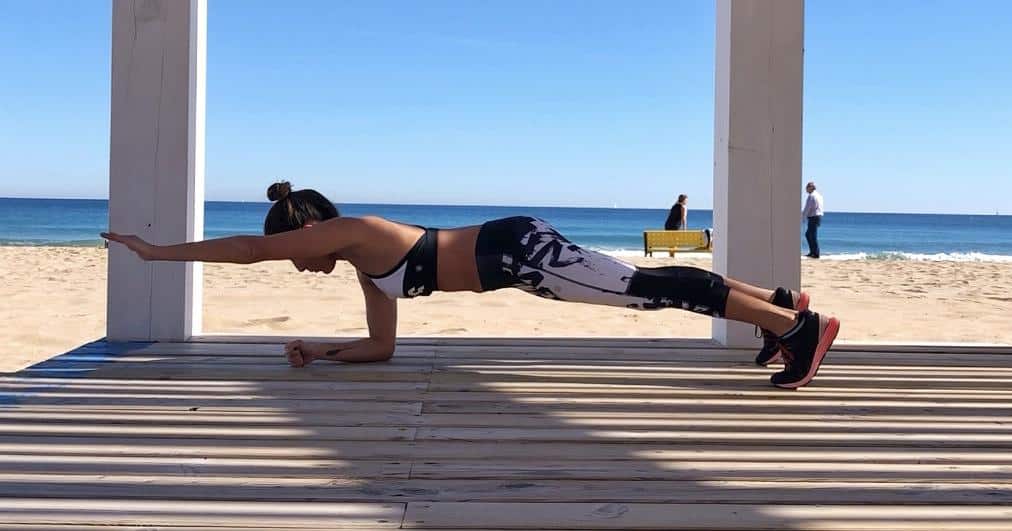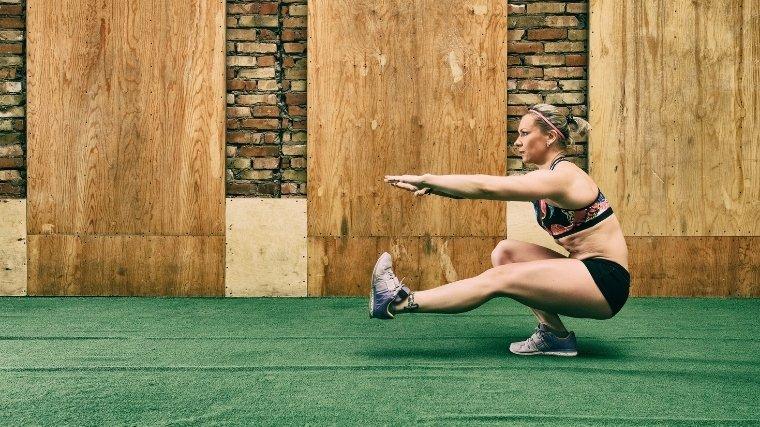20 de January de 2022
Explain The Main Balance Exercises For Athletes
Balance is one of the most forgotten physical conditions in our time. Strength and cardiovascular training are the two main pillars of any workout and coordination, balance or velocity have been one step behind. However, we must emphasize that balance, or rather imbalance, can be a determining factor for performance. In fact, a small imbalance in the request for support in a marathon can become a real torture and end up with an injury (1)
One of the main reasons for not involving balance within the training routine is because it doesn’t have a direct application or have visible results. (2). That is, that our center of gravity has changed in two months because we have focused on positioning it in a stable area has no impact on a visual level, however, because getting that callus that has come out on the foot for being excessive supinator disappears.
In addition, balance training doesn’t require large volumes of training, although it does require some consistency. We must put in all the workouts one or two balance exercises to look for our athlete to improve. The benefits of improved balance are manifold, from an improvement in running economy to improved squat performance (2). The basic movement patterns are improved in quantity and this allows to have more strength and more agility.

Benefits of Balance Training
Balance training can also be called proprioception training. Proprioception is nothing more and nothing less than being aware of the movement of our own body and knowing what position it is in at all times. And this is basically what it means to have balance, to be aware of the position of my body and to modify it to maintain the posture I want.
As for the benefits of having a balanced body or having a very good proprioception are multiple:
It allows an improvement in neural connections. With balance training I subject the brain to constant training and very dynamic decision making.
- It improves body stability and, therefore, posture. If I am aware of my body I can know if I have a bad posture or a correct one.
- He is a great injury forecaster. One of the main mechanisms of injury is a sprain. Proprioceptive training allows our joints to be more prepared for the imbalances of a competition.
- It improves flexibility to a great extent since it allows a greater range of travel. In fact, yoga is one of the best workouts for balance and flexibility.
- It improves the stability of the tread and, as we have said, allows a better race economy.
These are just a few of the multiple benefits you can get through balance or proprioceptive training. Needless to mention, it makes a monotonous workout of 4 sets of 10 repetitions on a bench, on a leg press or on a pulley become more fun with the use of the bosu. And best of all, it is suitable for any population and athlete.
Best exercises for balance
Before we continue let’s name the systems that are involved in equilibrium because it does not depend on just one. We all know that there are ossicles in the ear that are responsible for balance. To be exact, it is the vestibular system that detects movement within the inner ear and sends a neural signal to the brain.
But it also depends on our visual system, so when we close our eyes it is more difficult to maintain balance. And it depends, in turn, on the proprioceptive system as we have discussed above. We all have certain sensory receptors on our skin that tell us how our body is in space. However, with the passage of time these systems begin to fail and even the interpretation of our central nervous system does too.
Next, we are going to expose a guide on which you can base yourself to start training balance. Keep in mind that most activities of daily living do not pose a challenge to our balance. Sitting in the office, cooking or driving are not activities that subject our body to a challenge in terms of balance. Therefore, we must nourish our brain with situations that retain its tranquility. We recommend the following:
Balance to one leg
When we talk about balance, we talk about being lame. We will all know the test carried out by the police to know if you have drunk behind the wheel. Formerly, when there were no breathalyzers, the way to know if a person had drunk or not was to ask him to get on the lame leg and make a coordination movement. As alcohol is a drug that affects our consciousness one of the main side effects is the loss of balance and coordination. Well, precisely getting on the lame leg is a magnificent exercise to work the balance.
Once we have this exercise under control we can go further. How? As we see in the image we can play with the position we adopt. In this case we see that to reach this position we must keep the Core activated, take a deep breath and squeeze the abdomen. On the other hand, bring your arms forward and raise your leg. Once a position parallel to the ground is reached it is maintained as long as possible. If you are not able to keep your arms in that position place them in a jar on both sides of the body. When you have tired or 10 seconds have passed, return to the starting position. This exercise is great to start with. If you have it dominated, place yourself on uneven ground and practice it again (3)..

Front plate
The front plate is an exercise in balance, but it is also an exercise in strength. In this case, the entire musculature of the Core is activated so that our back does not arch. It is important to keep the buttock active and arms strong. The posture is very simple since it is quite stable. You should place your elbows under your shoulders as you can see in the picture and tighten your abdomen and buttocks. Once you have the controlled posture you can lift a limb, you decide which one. An arm or leg can be lifted. I recommend that you start by lifting only one limb, although if you are already advanced you can do it with two: an arm and a leg. However, keep in mind that you must keep the spine straight. You can place a ball in the lower back to control that it does not move and play to keep it in that position.

Strides
If you have ever practiced the dumbbell stride exercise you will have realized that it requires some balance to be able to do them. It also happens when we do a Bulgarian squat. In this case the progression towards a good stride is starting without any load. The first exercise we should do is to step forward and return to the starting position. If you do not succeed because you get unbalanced, open the leg you are carrying forward a little. Once you have that step controlled, you must make two strides and stand on the site. The leg change is sure to be a challenge at first, but you will see that after a couple of sessions you already control the exercise. If it seems very easy to you, you can take a step towards an uneven surface like a bosu. This will increase the complexity.
Side plate
An exercise that challenges balance is undoubtedly the side plank. It may seem easy, but you will see that with two simple changes it is an incredible challenge. First of all, we will make the iron supporting the elbows. Place one foot in front of the other. Remember that to do this exercise you must have strong shoulders. If it seems easy to you can move to the next level, climb one foot on top of the other. If it still seems easy to you, separate an arm and stretch it. The complexity can continue to increase, stop supporting the elbow and support only the hand. And if it still seems easy to you, raise one leg in the air. In the picture you have a magnificent progression for this exercise. 
Pistol Squat
This exercise requires a high physical condition. If you haven’t trained your legs months ago, don’t do this exercise. You can start by helping yourself with a chair or a trellis. Think that exercise is based on doing a deep squat with one leg so it requires large amounts of strength. In addition, if you perform the exercise without a good alignment of the hip, the knee and ankle can become harmful. We start from an upright position and we are left to the lame leg. Bend down slowly as if you were doing a classic squat. You can stretch your arms upwards or cross your hands in front of your chest. The upper body is straight. It is a great exercise to do as a couple. I would not focus on this exercise to train balance since it is an exercise more of strength than balance.

Strides with jump
In addition to training balance, it is important that we train other physical abilities. In fact, exercises that combine balance and strength or balance and endurance will make it easier to practice and incorporate into the workout routine. In this sense, jumping strides are an exercise with a high aerobic character and can allow you to continue training balance. When you have controlled the normal strides and with dumbbells you can move on to this exercise. It is a very simple exercise in which by means of a small jump you will change the position of the legs. You can perform 15-20 jumps and then stop. If you want to add difficulty, close your eyes or change planes. If you find it very easy add load with dumbbells or kettlebell.

Improve your performance and quantify your training
As we always say, what is not measured cannot be improved and this time, it is no different. With the linear encoder of Vitruve you can improve your performance and quantify your training. Of all the exercises that we have recommended there are some that will not be able to be quantified with the application of Vitruve. After all, the speed training system such as VBT serves to quantify the speed of execution, the range of travel or the power, in addition to being able to estimate the maximum repetition. In exercises such as balance to one leg or the front and side plates will not be useful.
However, we can always measure the speed of execution in the stride, or the pistol squat. Remember that the speed-based system helps us to measure your performance in the session and have a diary of your workouts. Used if you can in every workout and monitor your results. Balance training will help you improve your marks and have better intra- and inter-muscular coordination.
Unai Adrián Pérez de Arrilucea Le Floc’h
References
1.Grace TG, Sweetser ER, Nelson MA, Ydens L, Skipper B. Isokinetic muscle imbalance and knee-joint injuries. A prospective blind study. The Journal of bone and joint surgery American volume. 1984;66(5):734-40.
2.Guzmán KS, Fonseca AS, Jiménez JM, Mora LCS. Improved balance, attention and concentration after an exergame training program in the elderly person. Challenges: new trends in physical education, sport and recreation. 2018(33):102-5.
3.López JC, Arango EF. Effects of training on unstable surfaces on balance and functionality in older adults. Revista Facultad Nacional de Salud Pública. 2015;33(1):31-9.

